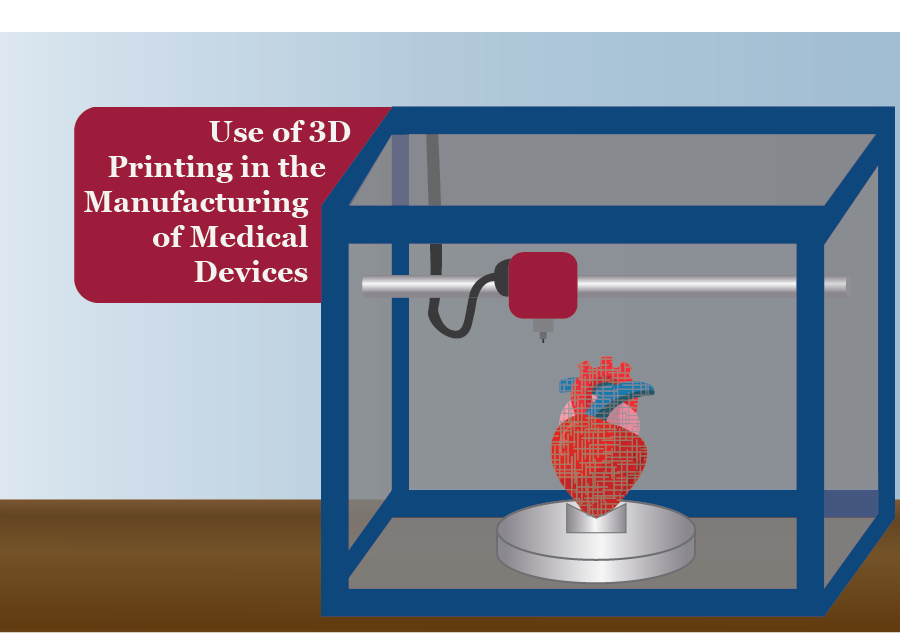Does your Quality Management System support using a 3D printing process to manufacture a medical device or a component of a medical device? There are a few considerations when using 3D printing in the manufacturing process of a medical device.
The following are examples of what types of processes a Medical Device Quality Management System may need to support:1
- Device Design: A design is created and validated using digital models with pre-specified sizes or digital models matched to a patient’s anatomy.
- Software Workflow: The digital device design is converted to a buildable file that is sent to the printer. This file will often divide the design into layers, include additional support material to aid printing, and tell the printer where to build the device on the printer platform to prepare it for printing. The 3D printer often also requires some preparation to build different designs by changing settings for the material, type of design, and intended use.
- Material Controls: Like any manufacturing process, 3D printing needs high-quality materials that meet consistent specifications to build consistent high-quality devices. To ensure this, procedures, requirements, and agreements called material controls, which must be checked for every batch of material, are established between the suppliers, purchasers, and end-users of the material.
- Printing: The object is printed using the design specifications included in the file.
- Post-Processing: After printing is complete, one or more post-processing steps may be performed on the device or component. These may include cleaning to remove residual debris, controlled cooling (also called annealing), and/or additional steps such as drilling, cutting, polishing, and sterilization.
- Process Validation and Verification: Some device or component characteristics can be checked individually after they are produced to make sure they will function properly and meet specifications. This is especially true of geometric features which can be checked quickly and nondestructively. When other functional features, such as mechanical strength, cannot be checked individually because the test could destroy the object or is impractical, manufacturers validate their processes prior to production. Process validation ensures that a manufacturing process will produce a product that is within defined specifications if specified processing parameters are monitored and controlled.
- Testing: Device testing methods and results are submitted to the FDA to demonstrate that the device meets regulatory requirements and is reasonably safe and effective for its intended use. Each device or type of device has its own set of tests that may be based on FDA Guidance documents, international standards, or internal process controls. Devices manufactured by 3D printing are generally subject to the same regulatory requirements as more traditionally manufactured medical devices.
To know how FDA regulates 3D printed devices, read our blog here:
HOW FDA REGULATES 3D PRINTED MEDICAL DEVICES
Need assistance in building your Quality Management System to support 3D printing? Give us a call at 248-987-4497 or email us at info@emmainternational.com.
1FDA (Dec 2017) Process of 3D Printing Medical Devices retrieved on 05-14-2019 from https://www.fda.gov/medical-devices/3d-printing-medical-devices/process-3d-printing-medical-devices





